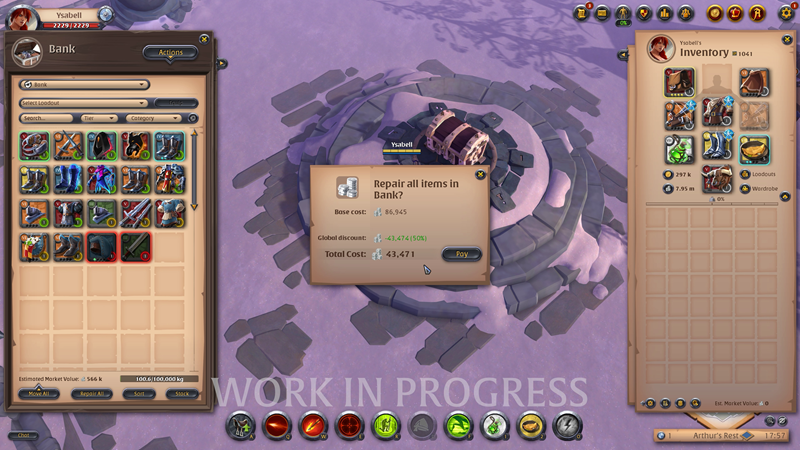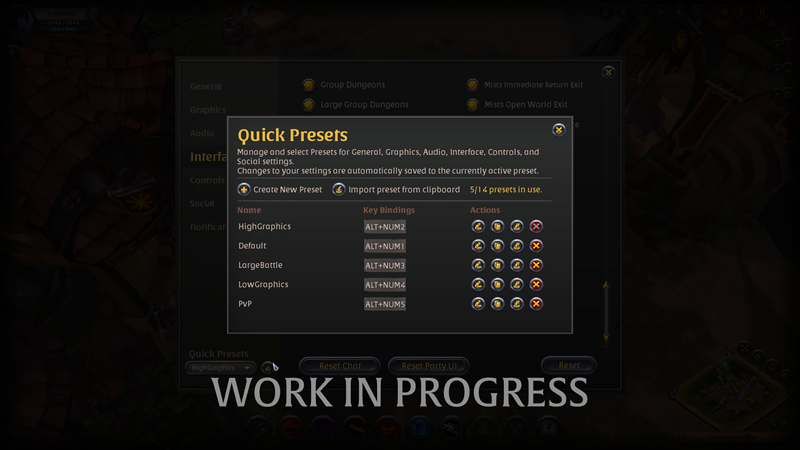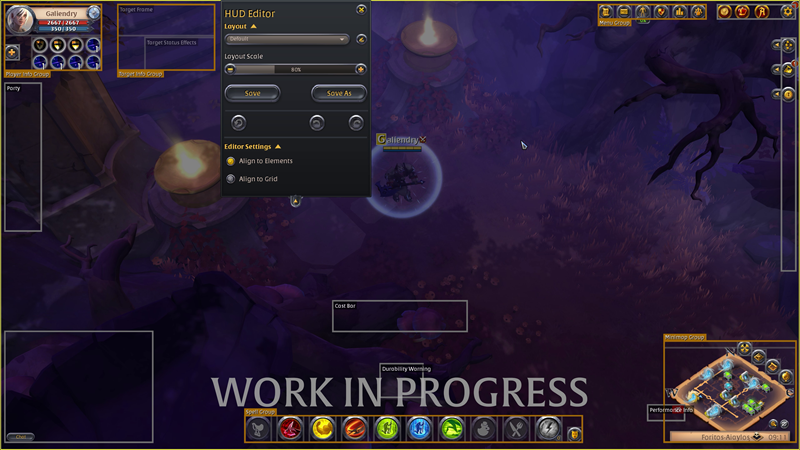When you attend to your farms after a hard day’s adventuring, you’re not just taking a well-deserved break. You’re also fueling Albion’s
economy as you produce
raw materials that are used in a multitude of ways across the game.
[previewyoutube][/previewyoutube]
Farmed products are used to create many different kinds of
food and potions. Food is essential to keep
crafting stations running, and also provide
buffs to players when consumed, while potions offer additional options in
combat. You can read more about them in our
guide to potions and alchemy.In addition, you can use your farm to raise
baby animals to become the
mounts that accompany every adventurer on their journeys.
This article provides you with a step-by-step guide for you to get started, before going through the different types of farming. Ready to start growing your own crops, herbs, and animals? Then read on…
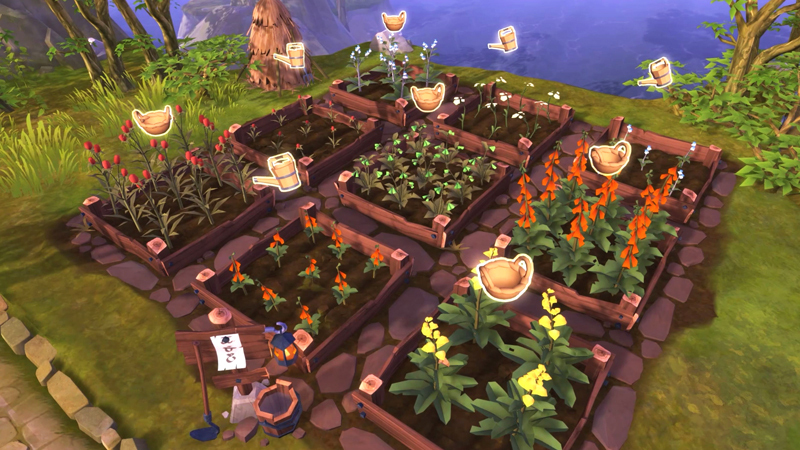
[h3]Step 1: Purchasing an Island[/h3]
In order to farm, you need a
farming plot. This is most common on a
player island, but can also be on a
farming territory provided by a guild.
Islands can be purchased at the
Island Merchant in any of the Royal Cities, Caerleon, or Brecilien. The Island Merchant is located in the center of these cities, close to the Marketplace. Here’s how it appears on the region map:
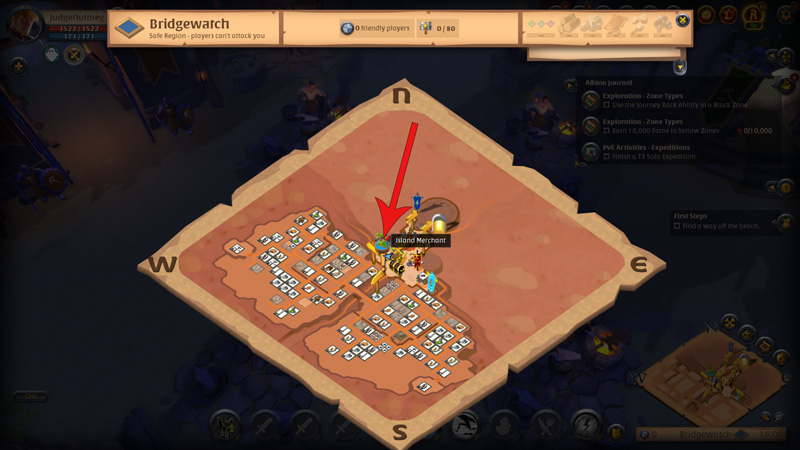
Please note that to purchase an island you need at least
7 days of Premium. After this, you can
keep the island forever without needing to continuously have Premium status.
Every island is
linked to the city in which it was purchased, and you can own up to one island for each city. They share a biome, and importantly you can travel between an island and its host city
for free. If you wish to travel from an island to a different city, you need to pay
transportation costs.
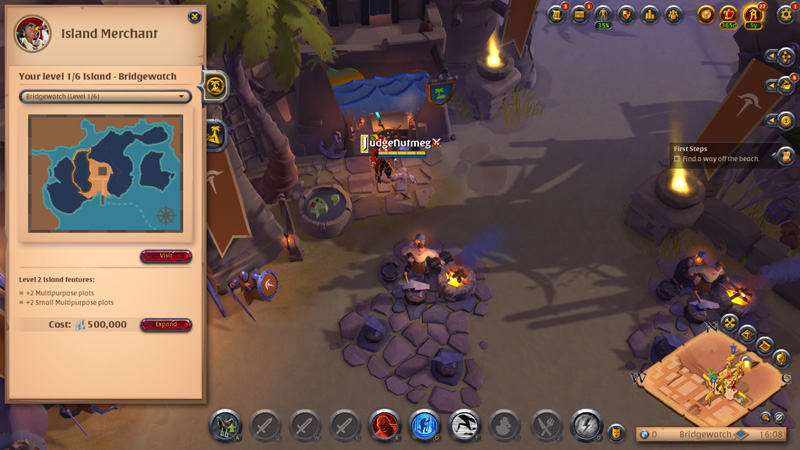
Now that you have an island, you can travel to it using the Travel Planner.
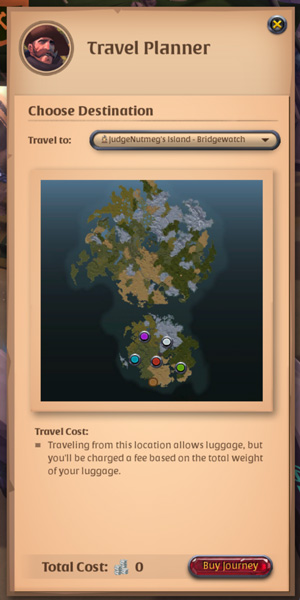
[h3]Step 2: Building a Plot[/h3]
Depending on the level of your island, you will have access to a number of
multipurpose plots that can be used for different types of farming plots or buildings. A
level 1 island contains one multipurpose plot
. Farming territories have only four plots to build on but will produce four times as much crop yield, and will grow animals four times as quickly.
To start building a farm, go to a multipurpose plot. Then, navigate to the Build UI by clicking your avatar in the top cleft and selecting ‘Build’ (on desktop you can simply
press H to open this menu). Navigate to the second tab, “Farming”, where you can choose between building a
Farm, Herb Garden, Pasture, or Kennel. Each of these allows you to grow different crops or raise different animals.
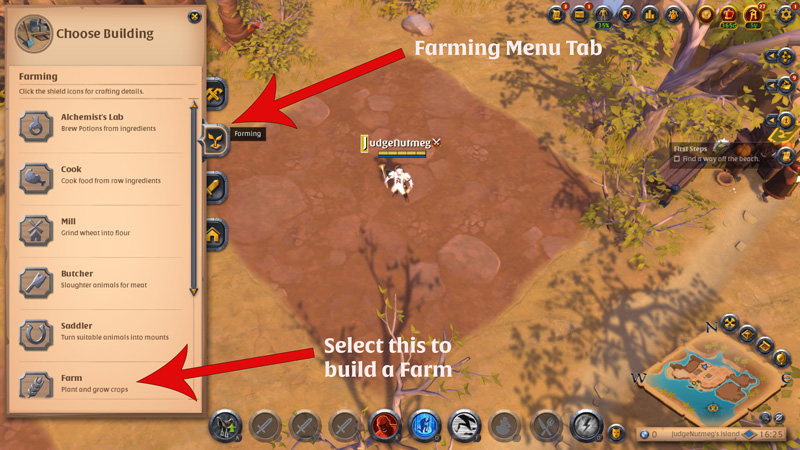
To build one of these, you need to make sure you have the necessary resources, which you can buy on the Marketplace or gather yourself.
[h3]Step 3: Growing Produce[/h3]
Let’s say you want to farm carrots. Once you’ve built a farm plot, you need to purchase some Carrot Seeds. Level 2 islands contain a
farming merchant from whom you can buy seeds, or you can obtain them from Marketplaces. It might be worth comparing prices to see which option is cheaper.
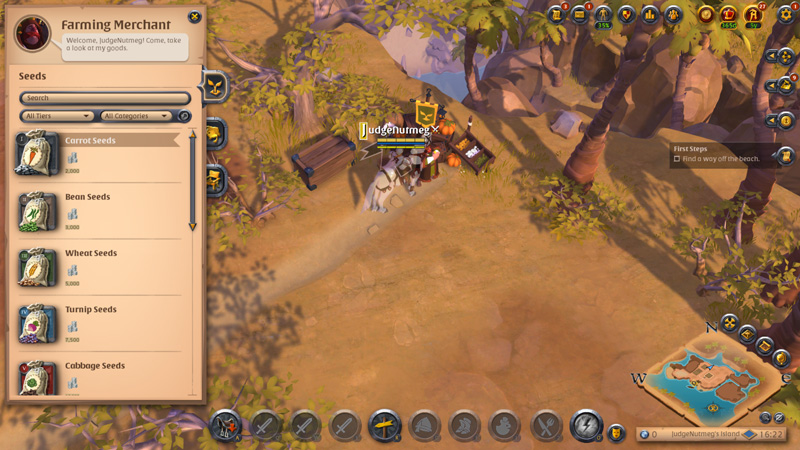
Go to your farming plot, select the Carrot Seeds from your inventory, and click "Place" to plant them.
If you have
Focus Points, you can choose to
water your plants which will guarantee that you receive seeds back from your crops (see below). If you water about half your plants, you can maintain enough seeds for the next day without having to purchase new ones, increasing your profits.
[h3]Step 4: Harvesting[/h3]
All plants have a
growth cycle of 22 hours, after which you can harvest them. There is also a chance that you’ll receive additional
seeds that you can use to farm again, and
Earthworms which can be used to craft Fishing Bait.
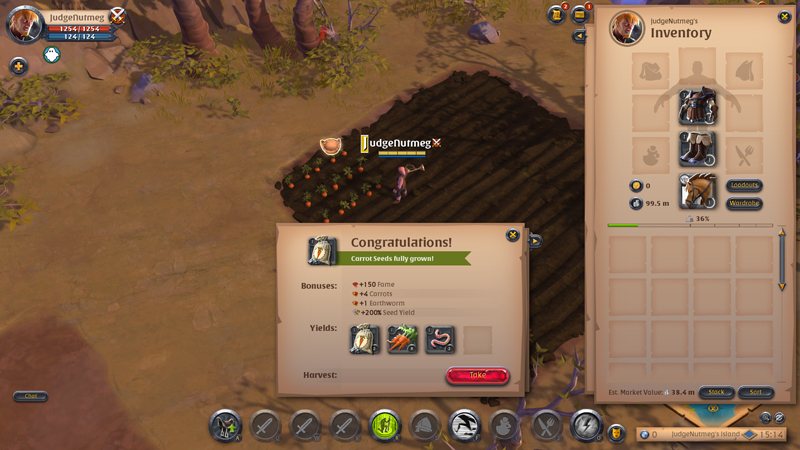
Go to your farming plot and click “Collect”. Congratulations, you've successfully grown and harvested your first plants!
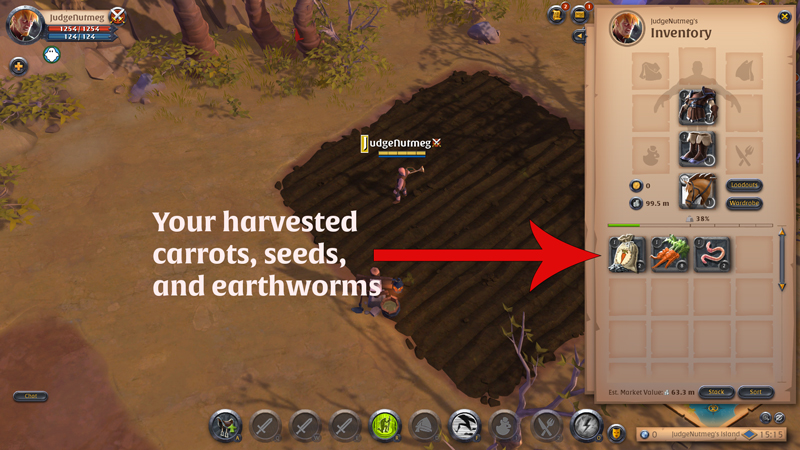
You can now sell your crops at the Marketplace, or use them for crafting food.
[h3]Types of Farms & their Products[/h3]
Specializing in a particular type of farming can allow you to progress more quickly in that area, leading to greater
efficiency and
mastery over time. Conversely,
diversifying your farming operations lets you produce a
broader range of items, offering flexibility and adaptability in the market. Each farming plot has a fixed cost and can be demolished at any point, which returns 90% of its resources. Below is an overview of the costs of each plot type and their products:
Farm
15 Rough Logs
15 Rough Stone
Carrots, Beans,
Wheat, Turnips,
Cabbage, Potatoes,
Corn, Pumpkins
Herb Garden
25 Rough Logs
25 Rough Stone
25 Birch Planks
25 Limestone Blocks
Arcane Agaric, Brightleaf Comfrey, Crenellated Burdock, Dragon Teasel, Elusive Foxglove, Firetouched Mullein, Ghoul Yarrow
Pasture
30 Rough Logs
30 Rough Stone
30 Chestnut Planks
30 Sandstone Blocks
T3 - T8 Horses
T3 - T8 Oxes
Stag, Moose
Chickens, Goats, Geese, Sheeps, Pigs, Cows
Kennel
50 Bloodoak Logs
50 Slate
10 Runite Steel Bars
T5 & T8 Moabirds, T5 & T8 Winter Bears,
T5 & T8 Wild Boars, T5 & T8 Bighorn Rams,
T5 & T8 Swamp Salamanders, T5 & T8 Greywolves,
T5 & T8 Mystic Owls, Swiftclaws, Direwolves, Direboars, Swamp Dragons, Direbears, Mammoths, Spring & Caerleon Cottontail
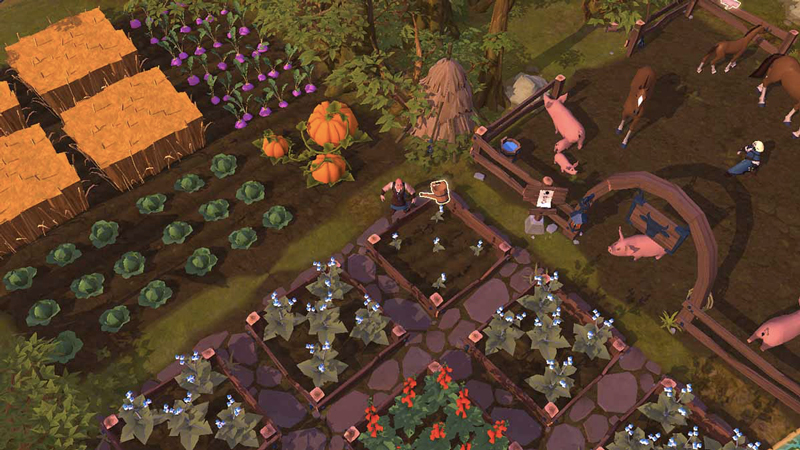
Here’s what you need to know about each type of product…
PlantsThe basics of planting have been covered in the step-by-step guide above. It’s also worth noting, though, that each Royal City has a
local production bonus for certain vegetables or herbs, which increases their yield by 10%.
Lymhurst
Bridgewatch
Martlock
Thetford
Fort Sterling
Crop
(T8) Pumpkin
(T7) Corn
(T6) Potato
(T5) Cabbage
(T4) Turnip
Herb
(T4) Crenellated Burdock
(T5) Dragon Teasel
(T6) Elusive Foxglove
(T7) Firetouched Mullein
(T8) Ghoul Yarrow
Animal
(T5) Goose
(T4) Goat
(T8) Cow
(T7) Pig
(T6) Sheep
Additional
(T1) Carrot
(T2) Bean
(T3) Wheat
(T2) Arcane Agaric
(T3) Chicken
Livestock AnimalsLivestock placed on a
pasture need to be fed in order to start growing. Each type has a
favorite food which
halves the amount of crops necessary to feed them.
Livestock Animals’ growth cycle is
1 day 20 hours, but can be
halved if you have
Premium Status.
When fully grown, these animals can either be collected to be
butchered, or fed again in order to get
secondary products like
eggs or
milk.
By using
Focus Points you can increase the
chances of them producing offspring which, similar to plants, helps you to restart the process without having to spend additional Silver.
Each Royal City has a
local production bonus which increases the yield from
butchering certain animals, and of their secondary products (see table above).
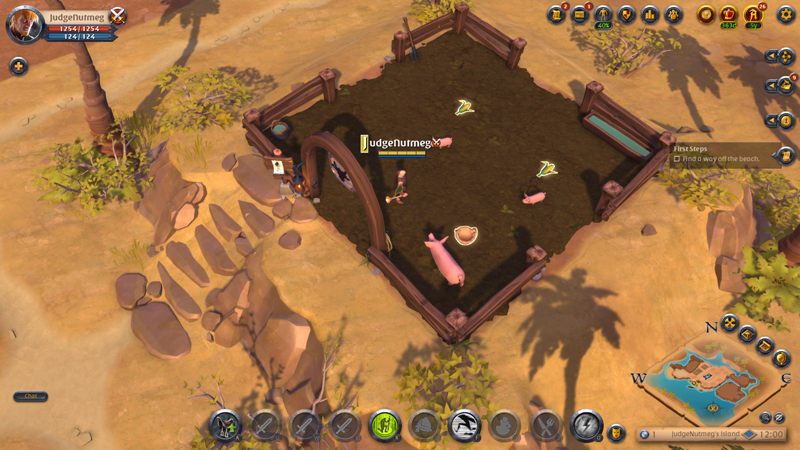 Riding Animals
Riding AnimalsUnlike livestock, Riding Animals don’t have a favorite food and their
growth cycle is dependent on the tier of the animal. Here’s how long it takes for each to grow (with and without Premium):
Baby Animal
With Premium
Without Premium
Only Horses and Oxen can be purchased from the Farming Merchant, all other Baby Animals need to be purchased from other players or found in the wild — when killing a Wild Animal, it has a chance of dropping its corresponding Baby Animal as loot.
Horses,
Oxen,
Stags and
Moose can be raised on a Pasture, while all other Riding Animals require a Kennel.
Baby Animals higher than
T4 can also be
nurtured multiple times, increasing the chances of them producing offspring.
When a Riding Animal is fully grown, it can be saddled at the
Saddler (another Farm Building which can be constructed on your island) and either used as your new riding mount or sold to other players.
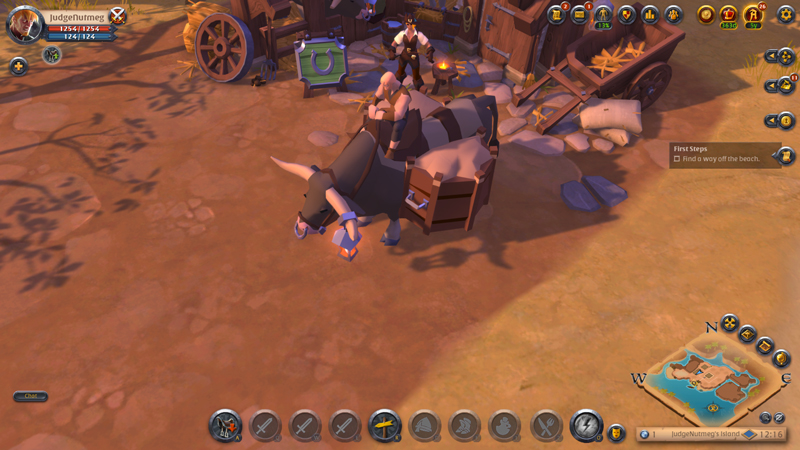
[h3]Conclusion[/h3]
Whether you choose to produce food or potions from the products of your labor, or sell them directly on the Marketplace, there are many ways you can contribute to Albion's vibrant economy — and turn a healthy profit while you do so!
Sometimes it’s a good idea to sell your products to your
guildmates and
friends. Many players are happy to buy them at a
small discount, while both of you benefit by avoiding Marketplace taxes.
If you’re looking to
expand your farming space but can’t upgrade your island any further or purchase a new island in another city, you can also ask your friends or guildmates if you can use their islands. They can allow you access to their islands via the
Access Rights UI, and vice versa.
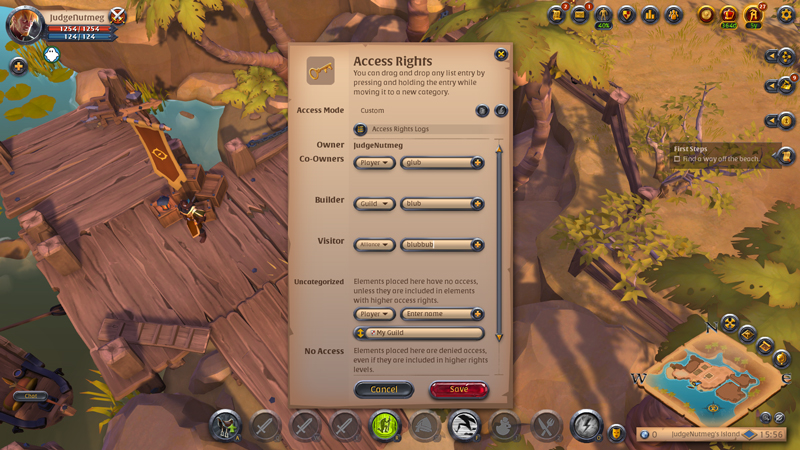
With this information, you should have all you need to work the land and earn your prosperity. Happy farming!

